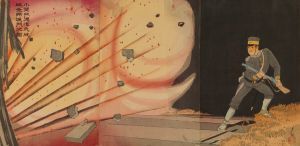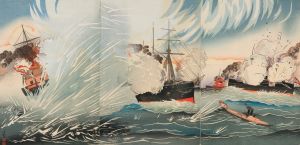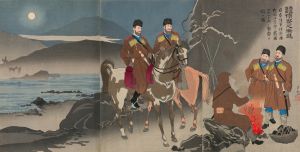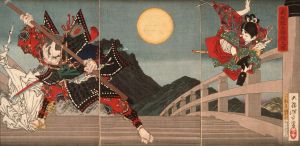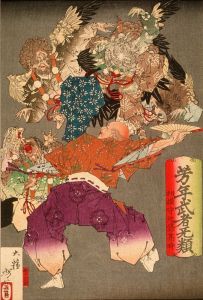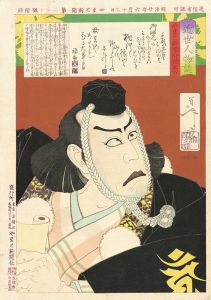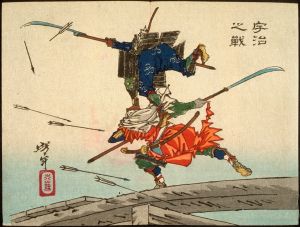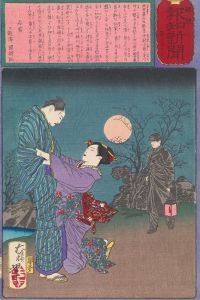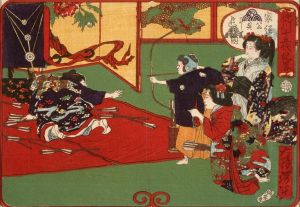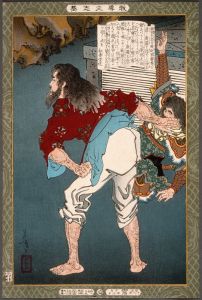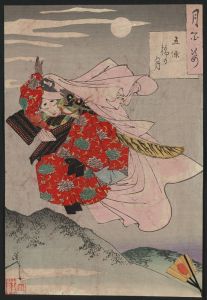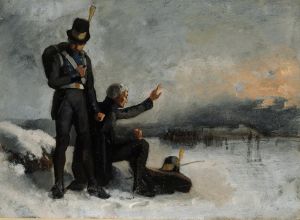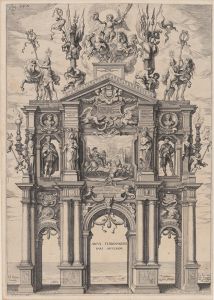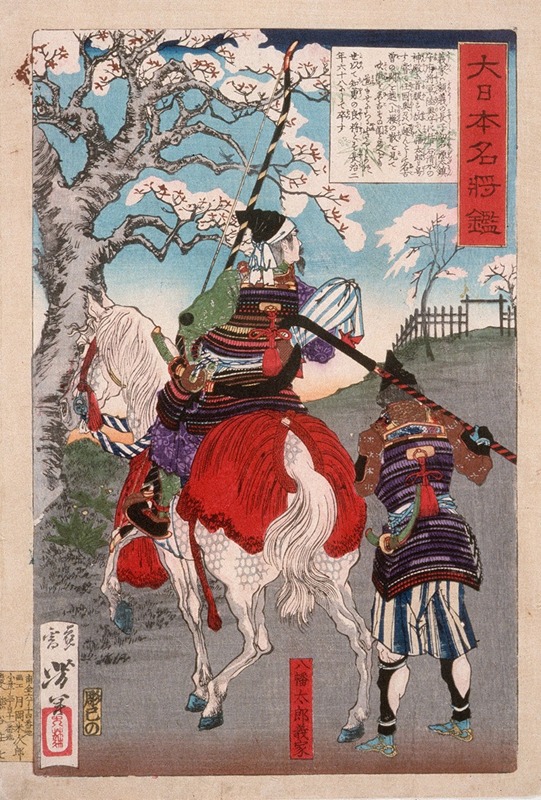
Hachimantarō Yoshiie at Nakoso Barrier
A hand-painted replica of Tsukioka Yoshitoshi’s masterpiece Hachimantarō Yoshiie at Nakoso Barrier, meticulously crafted by professional artists to capture the true essence of the original. Each piece is created with museum-quality canvas and rare mineral pigments, carefully painted by experienced artists with delicate brushstrokes and rich, layered colors to perfectly recreate the texture of the original artwork. Unlike machine-printed reproductions, this hand-painted version brings the painting to life, infused with the artist’s emotions and skill in every stroke. Whether for personal collection or home decoration, it instantly elevates the artistic atmosphere of any space.
Tsukioka Yoshitoshi (1839–1892) was a renowned Japanese ukiyo-e artist, known for his innovative and dramatic style during the late Edo and early Meiji periods. One of his notable works is "Hachimantarō Yoshiie at Nakoso Barrier," which is part of his series depicting historical and legendary figures. This artwork reflects Yoshitoshi's interest in historical subjects and his ability to capture the essence of Japanese folklore and history through his prints.
The artwork portrays Minamoto no Yoshiie, also known as Hachimantarō, a celebrated samurai warrior from the late Heian period. Yoshiie is often remembered for his military prowess and strategic acumen, which earned him a legendary status in Japanese history. He was a member of the Minamoto clan, one of the most powerful samurai families of the time, and played a significant role in the early conflicts that eventually led to the rise of the samurai class in Japan.
The scene depicted in Yoshitoshi's print is set at the Nakoso Barrier, a historical checkpoint located in what is now Fukushima Prefecture. This barrier was a significant strategic point during the Heian period, serving as a defense line against potential invasions from the north. The depiction of Yoshiie at this location highlights his role in the defense and expansion of the Minamoto clan's influence during his military campaigns.
Yoshitoshi's work is characterized by its dynamic composition and attention to detail, which are evident in this print. The artist's use of bold lines and vibrant colors brings the scene to life, capturing the intensity and drama of the historical moment. Yoshitoshi was known for his ability to convey emotion and movement in his prints, and "Hachimantarō Yoshiie at Nakoso Barrier" is a testament to his skill in depicting action and heroism.
This print is part of Yoshitoshi's broader exploration of historical themes, which was a common subject in ukiyo-e art. During the Meiji period, there was a resurgence of interest in Japan's past, and artists like Yoshitoshi played a crucial role in preserving and interpreting historical narratives through their work. His prints often combined traditional Japanese aesthetics with innovative techniques, reflecting the cultural transitions occurring in Japan during his lifetime.
Yoshitoshi's influence extended beyond his lifetime, as his work continued to inspire future generations of artists. His ability to blend historical storytelling with artistic expression has made his prints enduring pieces of cultural heritage. "Hachimantarō Yoshiie at Nakoso Barrier" is a prime example of how Yoshitoshi captured the spirit of Japan's samurai past while contributing to the evolving art form of ukiyo-e.
In summary, "Hachimantarō Yoshiie at Nakoso Barrier" by Tsukioka Yoshitoshi is a significant work that showcases the artist's mastery of ukiyo-e and his dedication to depicting historical subjects. Through this print, Yoshitoshi not only celebrates the legendary figure of Minamoto no Yoshiie but also contributes to the preservation of Japan's rich cultural history.





